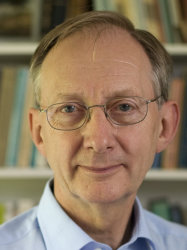BibTex format
@article{Oue:2022:10.1103/PhysRevResearch.4.013064,
author = {Oue, D and Ding, K and Pendry, J},
doi = {10.1103/PhysRevResearch.4.013064},
journal = {Physical Review Research},
pages = {1--6},
title = {Cerenkov radiation in vacuum from a superluminal grating},
url = {http://dx.doi.org/10.1103/PhysRevResearch.4.013064},
volume = {4},
year = {2022}
}

